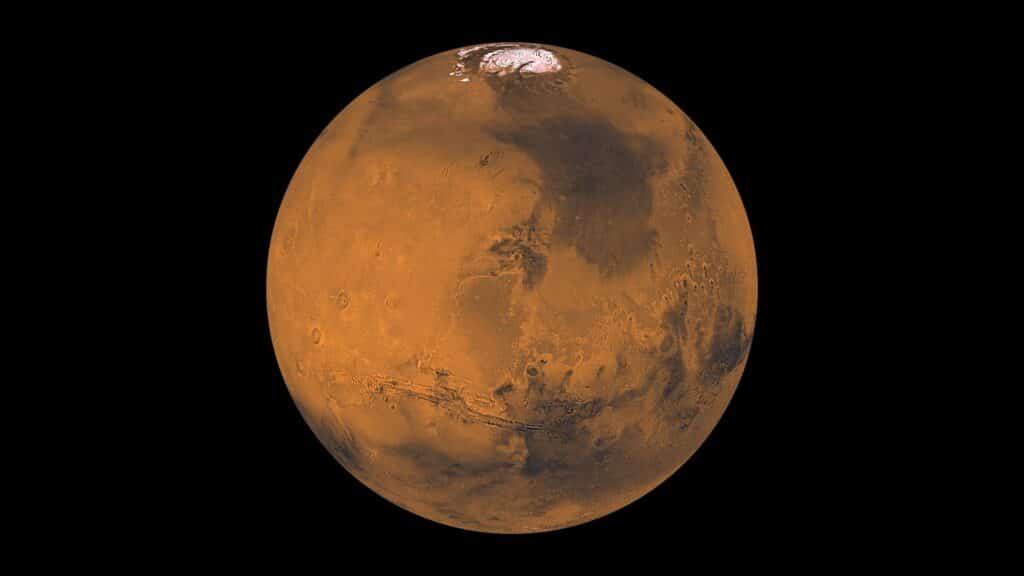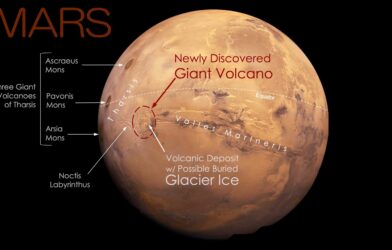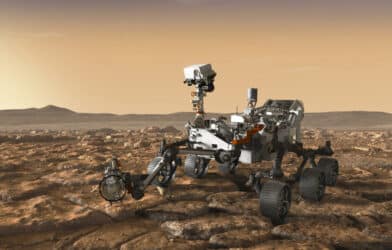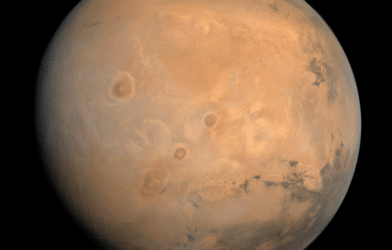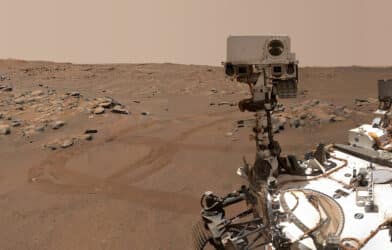A one-of-its-kind view has been captured from Mars. NASA’s 2001 Mars Odyssey orbiter celebrated its 22nd year at the Red Planet by photographing an extraordinary panoramic view of Mars. This milestone offers scientists a fresh and exceptional glimpse into the Martian atmosphere, reminiscent of the awe astronauts feel when witnessing Earth’s curvature.
The series of panoramic images, collected by the spacecraft in May from an altitude of approximately 250 miles, showcases the undulating Martian terrain veiled under layers of clouds and dust. If imagined stitched together, these ten images offer a unique perspective that could aid researchers in gaining fresh insights into the mysteries of the Martian atmosphere.

“If there were astronauts in orbit over Mars, this is the perspective they would have,” says Jonathon Hill of Arizona State University, operations lead for Odyssey’s camera, in a media release. “No Mars spacecraft has ever had this kind of view before.”
The feat was no easy task. Engineers at NASA’s Jet Propulsion Laboratory (JPL) and Lockheed Martin Space meticulously planned the observations over three months. The orbiter’s camera called Thermal Emission Imaging System (THEMIS), which is sensitive to warmth, allows mapping of ice, rock, sand, and dust on Mars’ surface while also detecting temperature variations.
However, THEMIS’ fixed position typically restricts its measurements to a narrow column directly below the spacecraft. To capture a broader atmospheric view, the Odyssey team devised a plan to rotate the orbiter almost 90 degrees. This intricate maneuver ensured that the Sun would illuminate the spacecraft’s solar panels while avoiding overheating sensitive equipment.
“I think of it as viewing a cross-section, a slice through the atmosphere,” says Jeffrey Plaut, Odyssey’s project scientist at JPL. “There’s a lot of detail you can’t see from above, which is how THEMIS normally makes these measurements.”
Hill highlighted that the Odyssey mission aimed to capture similar images across various Martian seasons to gather comprehensive atmospheric data. Furthermore, the spacecraft also seized imagery of Mars’ moon Phobos for the seventh time, offering fresh angles and lighting conditions that could aid in unraveling the moon’s composition and origin.
“We got a different angle and lighting conditions of Phobos than we’re used to,” notes Hill. “That makes it a unique part of our Phobos dataset.”
The imagery could contribute to settling a debate surrounding Phobos, a moon measuring about 16 miles across, pondering whether it is a captured asteroid or a fragment ejected from Mars due to a cosmic impact.
This remarkable imagery not only adds to the scientific understanding of Mars and its moons but also holds significance for ongoing and future missions, including the Mars Moon eXplorer (MMX) mission, a sample return mission to Phobos and Deimos, conducted jointly by NASA and JAXA (Japan Aerospace Exploration Agency). Odyssey’s data will assist scientists working on both the Odyssey mission and the MMX mission.
